Index of Articles
 |
A2A Adenosine Receptor 2011 May |
With proteins, small motions often have large effects. |
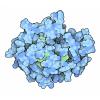 |
Alg13 Subunit of N-Acetylglucosamine Transferase 2010 February |
Eukaryotic cells have an elaborate mechanism for adding sugar chains to their proteins. |
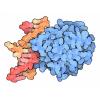 |
AlkB Homologs 2012 August |
Evolution is a great tinkerer, and when cells discover a useful plan for a protein, it is often pressed to service in other capacities. |
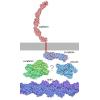 |
Alpha-Catenin Connections 2013 March |
Structures of alpha-catenin and vinculin are revealing a highly dynamic interaction in adherens junctions. |
 |
Alpha/Beta Barrels 2010 October |
How are these six proteins similar? They all perform very different functions: they represent five different classes of enzymes, and one is a non-enzymatic protein. |
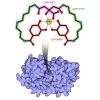 |
Anthrax Stealth Siderophores 2012 June |
Iron is an essential mineral, used by many enzymes for its ability to trap small molecules like oxygen and to act as a conduit of electron transfer. |
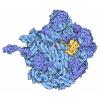 |
Antibiotics and Ribosome Function 2010 March |
Antibiotics are often discovered in nature, where they are lethal weapons in the fight between different organisms. |
 |
Aquaglyceroporin 2009 March |
The protozoan parasites that cause malaria multiply rapidly in the blood of infected individuals. |
 |
Archaeal Lipids 2012 December |
PSI:Biology Researchers have revealed how archaea build their unusually temperature-tolerant lipids. |
 |
Aspartate Dehydrogenase 2008 August |
Aspartate dehydrogenase is a new enzyme discovered by Northeast Structural Genomics Consortium. |
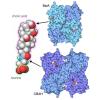 |
Bacteria and Bile Salts 2013 September |
PSI researchers have solved the first structure of a bacterial enzyme involved in the removal of bile acid hydroxyl groups in the human gut. |
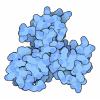 |
Bacterial Armor 2011 October |
Bacteria are found in nearly every corner of the world, evolving unique mechanisms to survive in their different environments. |
 |
Bacterial CDI Toxins 2014 June |
PSI researchers have solved the structures of several potent bacterial toxins, along with their antidotes. |
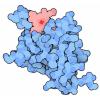 |
Bacterial Hemophores 2013 January |
PSI biology researchers are exploring the proteins that pathogenic bacteria use to gather scarce heme groups, and the iron ions they carry. |
 |
Bacterial Leucine Transporter, LeuT 2009 May |
Many antidepressant drugs, as well as drugs of abuse such as cocaine, block the traffic of neurotransmitters across the cell membrane of nerve axons and glial cells. |
 |
Bacterial Phosphotransferase System 2012 October |
Bacteria are thrifty cells. |
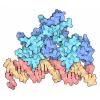 |
Bacteriophage Lambda cII Protein 2008 October |
Living cells are constantly making decisions: when to eat, when to move, even when to die. |
 |
CAAX Endoproteases 2013 August |
Structures of two Ste24p-family proteases locate the active site inside a hollow, membrane-spanning chamber. |
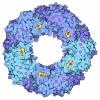 |
Cas4 Nuclease and Bacterial Immunity 2014 February |
A distinctive toroidal structure, a metal ion and an iron-sulfur cluster allow Cas4 to unwind and process phage DNA in the process of CRISPR-associated immunity. |
 |
CBS Domain Protein TA0289 2009 February |
Research in bioinformatics has shown that proteins are often modular, and that these modules are often mixed and matched to form new proteins. |
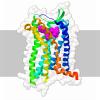 |
CCR5 and HIV Infection 2015 January |
A new PSI structure shows how the anti-HIV drug maraviroc locks the coreceptor CCR5 in an inactive state. |
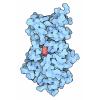 |
Chronophin 2008 May |
The cell is a busy place with thousands of things happening at once. |
 |
Coenzyme F420 Synthesis 2008 April |
Unusual coenzymes are often needed to perform particularly difficult enzymatic tasks. |
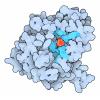 |
Community-Nominated Targets 2015 July |
The Community-Nominated Targets program has allowed PSI to collaborate with researchers on hundreds of systems of high biological significance. |
 |
CXCR4 2011 January |
The GPCR (G protein-coupled receptor) community is suffering from an embarrassment of riches. |
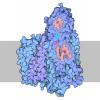 |
Cytochrome Oxidase 2012 November |
Cytochrome oxidase is the foundation of aerobic respiration. |
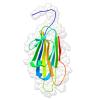 |
Deciphering Microbial DUFs 2014 November |
PSI researchers are characterizing domains of unknown function in microbes, and discovering new protein folds in the process. |
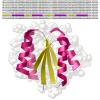 |
Designer Proteins 2013 February |
PSI biology researchers have discovered several rules for protein folding and used them to design five entirely new proteins. |
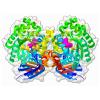 |
Discovering Deaminases 2014 January |
The Enzyme Function Initiative uses a structure-guided approach to predict functions of enzymes based on their amino acid sequence. This approach has revealed a variety of novel deaminases. |
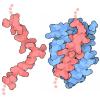 |
Disordered Proteins 2012 February |
Looking through the thousands of structures in the PDB, we get the impression that proteins must have a stable, folded structure to be functional. |
 |
DNAJA1 and Pancreatic Cancer 2014 July |
PSI researchers have determined the structure of a DnaJ cochaperone and studied its role in pancreatic cancer. |
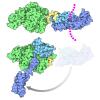 |
Dynamic DnaK 2015 March |
PSI researchers have used an engineered version of DnaK to reveal the open state of an Hsp70 protein chaperone. |
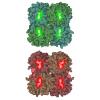 |
Evolution of Photoconversion 2015 June |
PSI researchers have discovered that protein flexibility is a key element in the evolutionary pathway for developing photoconvertable GFP-like proteins. |
 |
Exploring the Secretome of Gut Bacteria 2011 September |
We often think of bacteria as our enemies, as something we need to fight with antiseptics and antibiotics. |
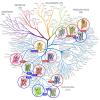 |
G Protein-Coupled Receptors 2012 May |
In the past five years, the field of GPCR structure has exploded. |
 |
G Proteins and Cancer 2013 November |
G-proteins play an essential role in cell signaling, a role that is corrupted in many types of cancer cells. |
 |
Glucagon Receptor 2014 April |
PSI researchers have solved the structures of a GPCR that binds to peptide hormones, revealing new modes of GPCR recognition. |
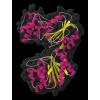 |
Glycerate Kinase 2008 March |
The structure of the TM1585 gene product of the bacterium Thermotoga maritima, recently solved by the Joint Center for Structural Genomics, gives the first look at a novel enzyme in sugar metabolism, and provides a new protein fold as a bonus. |
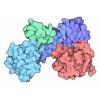 |
Guanine Nucleotide Exchange Factor Vav1 and Rho GTPase Rac1 2009 October |
Our cells are filled with a cytoskeleton that provides an infrastructure for support, transport, and locomotion. |
 |
Hda and DNA Replication 2009 June |
Cell division requires careful bookkeeping. |
 |
Hemolysin BL 2010 January |
Bacteria are master weapon makers. |
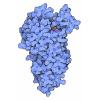 |
Imidazolonepropionase (HutI) 2008 December |
Histidine is an essential amino acid with several interesting chemical properties. |
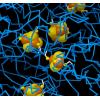 |
Iron-Sulfur Cluster Biosynthesis 2014 December |
PSI researchers are exploring the complex biological machinery that builds iron-sulfur clusters. |
 |
Isoxanthopterin Deaminase 2010 November |
How do you discover the function of a new protein? Structural genomics researchers are faced with this problem every day, and they have developed a toolbox full of methods to help solve it. |
 |
Lysostaphin 2009 July |
Antibiotics are one of the major triumphs of twentieth century science, but unfortunately, the bacteria are fighting back. |
 |
Making Lipopolysaccharide 2012 January |
Many bacteria surround themselves with a protective coat, to resist attack from antibiotics, predators, and the immune system. |
 |
Methylation of Arginine 2013 December |
Protein methylation is widely used for regulation of proteins inside cells. A recent PSI structure reveals the interaction between an arginine methyltransferase and the machinery that regulates its action. |
 |
Mre11 Nuclease 2010 May |
All living things on the Earth store their genetic information in long strands of DNA. |
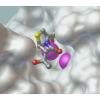 |
NDM-1 and Antibiotics 2013 May |
With structural biology and computational analysis, PSI Biology researchers have revealed the catalytic pathway of an antibiotic-destroying enzyme. |
 |
New NTF2-like Domains 2014 May |
PSI researchers are exploring the range of structures adopted by a versatile protein fold. |
 |
Nitrile Reductase QueF 2011 March |
Nature uses exotic chemistry to build its diverse collection of molecules. |
 |
Nitrobindin 2010 December |
Proteins perform most of the nanoscale tasks inside of cells, but occasionally, they need help from more exotic molecules. |
 |
P2Y Receptors and Blood Clotting 2014 September |
PSI researchers have revealed a novel rearrangement in a purine-binding GPCR, opening new avenues for the design of blood clotting drugs. |
 |
PDZ Domains 2013 April |
PDZ domains are specialists in protein recognition, but PSI Biology researchers are revealing their abilities to bind to membranes as well. |
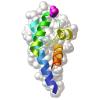 |
Peptidyl-carrier Proteins 2014 October |
PSI researchers have determined the structure of a new class of peptidyl-carrier proteins, helping to understand how cells make exotic peptides without using ribosomes. |
 |
Phytochrome 2010 April |
Most animals, including ourselves, use sophisticated eyes to see light. |
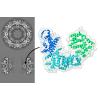 |
Piecing Together the Nuclear Pore Complex 2015 February |
PSI researchers have solved another piece in the puzzle for revealing an atomic-level model of the nuclear pore complex. |
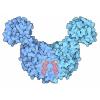 |
Pilus Assembly Protein TadZ 2012 April |
Many bacteria are covered with long filaments, called pili or fimbriae, that help them interact and attach to their environment. |
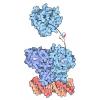 |
Power in Numbers 2014 August |
PSI researchers have determined the structure of a transcriptional regulator involved in quorum sensing in an important pathogenic bacterium. |
 |
Proteinase K and Digalacturonic Acid 2010 September |
X-ray crystallography is one of the most exact experimental techniques, but ironically, it is also one that relies on sheer luck. |
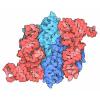 |
Pseudouridine Synthase TruA 2009 November |
Evolution is a great tinkerer. |
 |
Rb Tumor Suppressor and Cancer 2011 August |
One of the overarching goals of structural genomics is to characterize the structure and function of entire systems of proteins. |
 |
RBBP9 (Retinoblastoma Binding Protein 9) 2010 June |
Biological complexity is at its most complex when we look to signaling. |
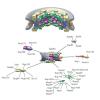 |
Revealing the Nuclear Pore Complex 2012 March |
This is an exciting time for the study of the nuclear pore complex, the highway of transport between the cytoplasm and nucleus, and also a central player in nuclear organization and gene regulation. |
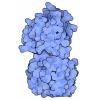 |
Ribofuranosyl Binding Protein 2011 June |
Molecular recognition is at the very heart of life. |
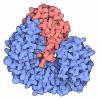 |
Ribonuclease and Ribonuclease Inhibitor 2009 April |
The complex between ribonuclease and ribonuclease inhibitor is one of the tightest known intermolecular interactions, but researchers at the CESG are trying to change that. |
 |
RNA Chaperone NMB1681 2011 July |
The small protein NMB1681 has been proposed to act as an RNA chaperone, but unlike a chaperone at a high school dance, NMB1681 acts as a molecular matchmaker, trying to bring together the molecules it watches over, rather than keeping them apart. |
 |
RNase T 2008 July |
Living cells are filled with RNases, but not highly destructive ones like our digestive RNase. |
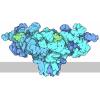 |
Ryanodine Receptor 2015 April |
PSI researchers take a close look at a gated calcium channel that controls muscle contraction. |
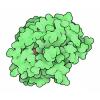 |
Salicylic Acid Binding Protein 2 2009 August |
Centuries ago, both the ancient Greeks and native Americans discovered that willow bark and other plants can dull pain. |
 |
SARS Coronavirus Nonstructural Protein 1 2008 June |
Researchers at the Joint Center for Structural Genomics have obtained the first look at nsp1 (nonstructural protein 1), a major factor in the pathogenicity of the coronavirus that causes SARS (severe acute respiratory syndrome). |
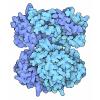 |
Scavenger Decapping Enzyme DcpS 2008 November |
Messenger RNA molecules are temporary molecules. |
 |
Secretagogin 2009 December |
Cells typically deplete themselves of calcium, expending considerable energy to pump calcium ions out of the cell or into special compartments inside the cell. |
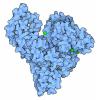 |
Serum Albumins and Allergies 2013 October |
A new structure of bovine serum albumin reveals three calcium-binding sites and sheds light on the unusual allergenicity of the molecule. |
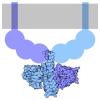 |
Signaling with DivL 2015 May |
DivL shares many structural features with other bacterial signaling proteins, but has been modified by evolution to reverse the typical directionality of signaling. |
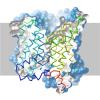 |
Solute Channels 2012 September |
Cells maintain a steady traffic of small molecules across their membranes. |
 |
Stabilizing DNA Single Strands 2013 July |
PSI researchers have determined the structure of a new single-stranded DNA-binding domain, revealing a surprising connection between the kingdoms of life. |
 |
Superbugs and Antibiotic Resistance 2011 December |
Antibiotics were used as weapons to fight bacteria long before Alexander Fleming discovered penicillin. |
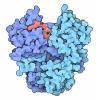 |
T-Rex 2008 September |
The repressor protein T-Rex has the difficult job of distinguishing the difference between NAD+ and NADH. |
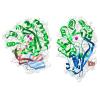 |
Targeting Enzyme Function with Structural Genomics 2012 July |
Prediction of the function of a new enzyme based only on its sequence, or even on its structure, is still a major challenge, and will be a major prize for biomedical research when effective methods are developed. |
 |
The Perils of Protein Secretion 2011 November |
Salmonella bacteria are tiny terrorists that infect cells and ultimately destroy them. |
 |
Toxin-antitoxin VapBC-5 2009 September |
Living cells are full of surprises and mysteries. |
 |
TrkH Potassium Ion Transporter 2011 April |
Cells are filled with a salty soup of metal ions. |
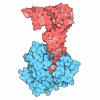 |
tRNA Isopentenyltransferase MiaA 2010 August |
Cells always seem to find the best way of doing things. |
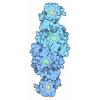 |
Tryptophanyl-tRNA Synthetase 2011 February |
Biology is full of surprises, and they often tell us important things about ourselves. |
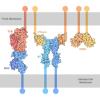 |
Tuning Immune Response with Costimulation 2013 June |
PSI researchers are studying molecules that stimulate and inhibit our immune response, ensuring that it is activated only when necessary. |
 |
Viroporins 2014 March |
PSI researchers have determined the structures of several viral pore-forming proteins, revealing common functional features. |
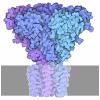 |
Zinc Transporter ZntB 2010 July |
Zinc is an essential component of many cellular processes. |



